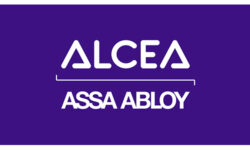Fire Market Report – Trends Spark Mass Notification Awareness
Mass notification was the most notable trend in the fire/life safety industry in 2009, according to SSI‘s 2009 Fire Market Report. The report delves into MNS technologies and codes, and also takes a look at sprinkler monitoring, video fire detection and multiple-sensor fire detection.

Photo Credit: kruder396 | www.flickr.com
Because of the similarities between MNS and fire, UFC classifies MNS under the same life safety heading assigned to fire alarm systems, only MNS takes priority over the latter. Fire alarm systems are based on fault-tolerant technologies. This means that MNS systems, like their fire alarm counterparts, are designed to work in the most adverse conditions.
A typical mass notification system is comprised of three basic elements: individual building MNS, wide area MNS, and high power speaker arrays (HPSA).
By utilizing selective paging techniques, it’s possible to send a number of distinctly different messages to a number of areas within a facility, all at the same time. These messages can consist of verbal instructions, unique tones, and a variety of visual aides designed to convey a message. This helps to assure the occupants respond in a specific way in order to maintain safety.
Outside speakers can be placed on buildings in an individual building MNS system, but the UFC sets the area of coverage to a maximum of 100 feet.
A wide area MNS will work the best for a large campus. However, when working with in large public areas, such as football and baseball stadiums, a HPSA provides the best coverage at higher audio output levels. Here, intelligibility becomes an issue to consider, and by degrading the rated area of coverage of each speaker array, large audio outputs can be made more intelligible.
As with all life safety systems, all aspects relating to notification and initiation must be supervised. This includes adequate standby capacity when the public electric power is lost for extended periods. For example, under UFC HPSA systems must contain a back-up power source with a capacity of 72 hours following the commencement of a blackout.
Multi-Criteria Fire Detection
The industry has long awaited the arrival of a multiple-criteria fire detection device capable of integrating a number of sensory inputs. System Sensor recently released such a detector that monitors an environment for carbon monoxide (CO), temperature, smoke and open flame.
Traditional spot detection provides separate smoke and heat detection with the addition of a thermal sensor. By adding flame and CO detection to the mix, and by introducing intelligence into the detector, we can now make a more educated decision as to when to evacuate buildings and summon the fire department.
For example, when there’s smoke and CO in the same room, it’s likely there’s a fire. This is because an open flame usually raises the CO level in its vicinity. At the same time, today’s thermal detectors are capable of detecting the slightest increase in ambient temperature in a room.
By placing all of this information into a central microprocessor, it’s possible to avert false alarms< /a> while assuring early warning detection when it’s appropriate. This was not always possible in the past.
Sprinklers Offer Additional Recurring Income
One of the most overlooked areas in life safety for the fire alarm technician is that of sprinkler system monitoring. With the recent increase in emphasis by the NFPA and other organizations come more opportunities for alarm companies to increase their recurring revenue income. [IMAGE]178[/IMAGE]
Sprinkler systems come in all shapes and sizes, from residential applications to that of gigantic high-rise facilities. Sprinkler systems are high on the “to-do” list among fire and building department authorities. Almost every new building that meets International Code Council (ICC) criteria is fitted with a compliant sprinkler system.
There are several types of sprinkler systems that fire alarm technicians must contend with. The most common are the wet, dry, and deluge systems.
Sprinkler systems often are equipped with vane-type flow switches fitted in riser pipes in order to detect the flow of water in the system. At times pressure switches are used to detect a significant drop in water pressure within the riser, which usually signifies water flow.
If you enjoyed this article and want to receive more valuable industry content like this, click here to sign up for our FREE digital newsletters!

Security Is Our Business, Too
For professionals who recommend, buy and install all types of electronic security equipment, a free subscription to Commercial Integrator + Security Sales & Integration is like having a consultant on call. You’ll find an ideal balance of technology and business coverage, with installation tips and techniques for products and updates on how to add to your bottom line.
A FREE subscription to the top resource for security and integration industry will prove to be invaluable.














